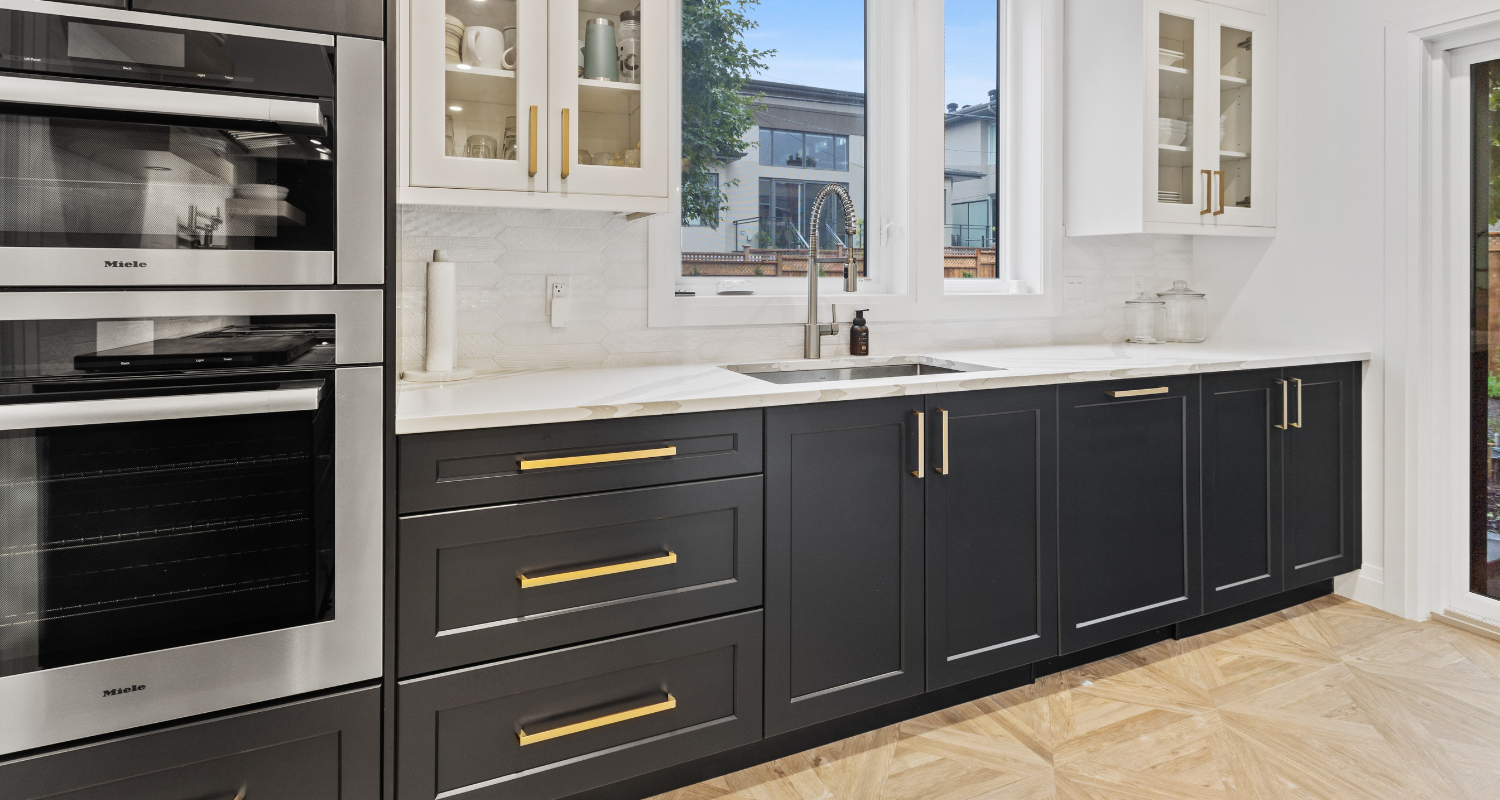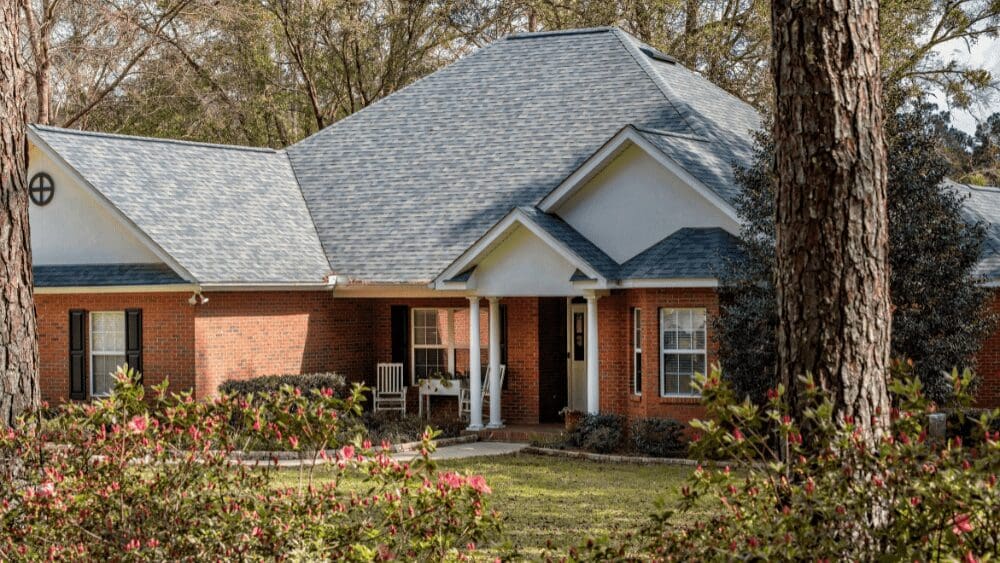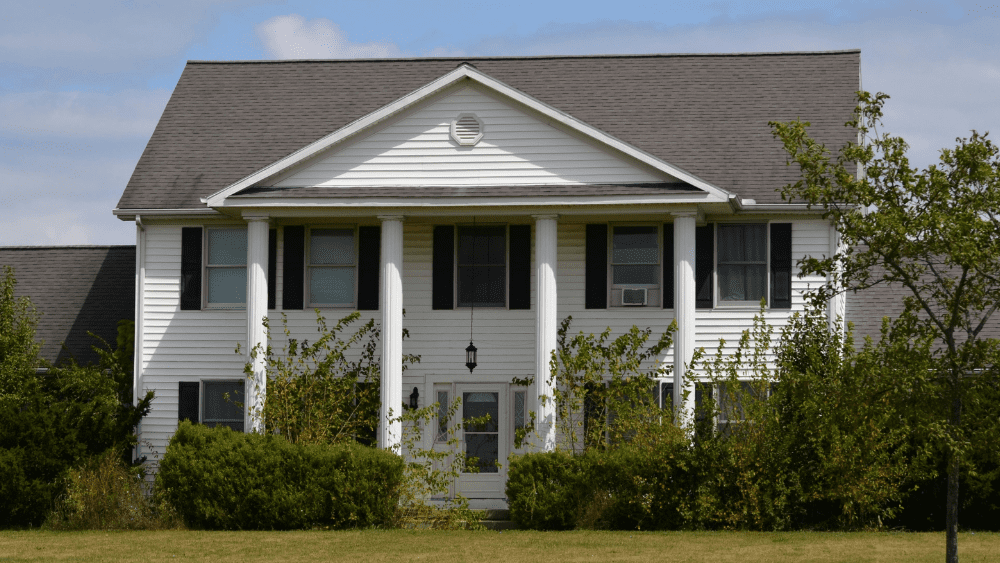
Ah, the kitchen. Where taste buds rejoice. Where families bond. Where the tea kettle whistles when it’s time for another hot cup. This room, with all of its versatility and uses, is a special part of any home. And after tiring of your dark oak or laminate cupboards and storage, you feel it’s time to breathe fresh life into yours by installing new cabinets. No matter the reason, upgrading kitchen cabinetry can be a worthwhile investment, says Larry Chun, a top selling agent in Oahu Hawaii who sells properties 38% faster than the average area agent. “If you have money to do new kitchen cabinets, it definitely boosts the value of the home because people spend a lot of time in the kitchen,” Chun said. “That’s where people entertain, that’s where families come together.” For an idea of what you’re getting into, an average kitchen cabinet installation costs between $160 and $550 per linear foot for stock or semi-custom styles. This translates to between $3,200 and $8,500 total. For completely custom cabinets, homeowners can expect to pay between $500 and $1,200 per linear foot, with a total cost between $12,500 and $18,100. Add More Custom Cabinets in Prescott, Arizona, installed new semi-custom kitchen cabinets for a homeowner in 2022. The project was for a U-shaped kitchen with a pantry, Lazy Susan and fridge cabinet. The homeowner made the following design selections: The project was quoted as follows: Like most businesses, cabinetmakers have experienced an increase in their labor and material costs due to inflation. According to data from the U.S. Bureau of Labor Statistics, the cost of custom wood cabinets was up almost 20% by Q4 2022 compared to Q2 2021. Costs have begun to stabilize, as demand for new cabinets for newly-built homes declines alongside a reduction in housing starts, or the number of homes that builders have begun constructing. One way to price cabinets is by linear foot, which is the length of space they occupy along a wall. Cabinet depth isn’t usually a factor, for the industry standards for both base and wall cabinets are almost always the same: 24 inches for a base and 12 inches for a wall. So if cabinets stretch along 10 feet of wall without interruption, that’s 10 linear feet. But if there are any gaps in the cabinetry to make room for a window or appliance, then you deduct that length. To get an overall linear footage for your layout, measure the base and wall cabinets separately and add them together. Here are examples of how much it costs to install cabinets in two standard sized kitchens: Many variables go into the overall cost of kitchen cabinetry installation. A decision that will make a significant difference in the price is whether you choose a stock or custom design — or somewhere in the middle. Before delving into the pros and cons of each, here is a quick look at the average costs: Stock cabinets are the least expensive option, but long gone are the days when the word “stock” means cheap and poorly made. The craftsmanship is up to par in most cases, but where you might run into frustration is when it comes to flexibility and variety. Stock cabinets come in a limited number of sizes, colors, and styles. Like the game Tetris, you have to use the few shapes available to fit your space. If you choose this path, it’s best to go into it knowing you may need to make some compromises along the way. To ensure you’re at least getting higher quality stock cabinets, look for those that carry the Kitchen Cabinet Manufacturers Association (KCMA) Quality Certification Seal. This means the non-profit association has rigorously tested and approved the durability and functionality of the cabinets. If the cabinets also carry the KCMA’s Environmental Stewardship Program Seal, then it means they were constructed using sustainable and responsible practices. Like it sounds, semi-custom cabinets are a good middle ground both in price and versatility. They’re essentially stock cabinets with more options and add-ons available in regard to style, size, color, and design. This includes rollout shelves, cabinet lighting, and decorative molding. Aside from the higher price tag, the primary downside of semi-custom cabinets is the time it takes between ordering and delivery. Whereas stock cabinets can be ready for installation either the same day or soon after, semi-custom cabinets usually take four to eight weeks. For those who are less concerned about the price of their kitchen cabinets and more concerned about the design, a completely custom job may be the way to go. Starting with a blank slate, you work with a cabinetry specialist to create your dream kitchen. Where pricing tends to vary substantially is the type of material you choose. One of the most popular wood species is domestic oak due to its low cost, durability, and availability. On the pricier side would be something exotic like mahogany. Including preparation and cleanup, the typical labor cost to install kitchen cabinets can range between $80 and $190 per cabinet, or $50 to $450 per linear foot. The installation price mostly varies depending on the type of cabinets involved and the professional you hire to do the job. If it’s semi- or completely custom cabinetry, then there may be some specialty items like a Lazy Susan or farmhouse sink cabinet that require some additional time to secure and ensure all of the mechanics work properly. Choosing a professional to do the job usually comes down to deciding between a handyman and cabinet installer. Either may choose to charge the job by the hour or per cabinet installed. On average, cabinet installers will charge between $70 and $200 per hour, or between $105 and $300 per cabinet. For handymen, the averages are $50 to $100 per hour and $100 to $200 per cabinet. That said, the actual installation price between stock and custom cabinetry is not much different in most cases, Chris Gloyd, a cabinet specialist with Add More Custom Cabinets, said. “What you’re really paying for is the time to build the cabinets,” he said. “The install process of it is so close it’s honestly negligible.” Cabinet material: Materials typically make up between 25% and 50% of a project’s pricing. Though real wood is the most common material for cabinetry, alternatives like laminate or thermofoil are viable alternatives that cost much less. Add-ons: This includes hardware such as pulls and handles, which run anywhere between $2 and $125 per item. Total number of cabinets: Each cabinet can cost anywhere between $100 and $600 (or more if it’s a custom piece), so figuring out exactly how many cabinets you want can be worth the effort. Removal and disposal of old cabinets: The number of cabinets needing removal determines this cost, but most homeowners can expect to pay between $300 and $500. If you’re looking to save on your project, doing the removal yourself is a good place to start given its relative simplicity. Trim and molding: These are the finer details added to cabinets to give them finishing touches and flair. Crown molding alone can add an average of $150 to $350 to the project’s price tag. Relocation of plumbing and electrical: If you decide to shift the placement of your appliances to better suit your new cabinets, just know it will likely require moving electrical outlets and plumbing. Depending on the complexity of the project, this can cost $300 or more for the electrical. To reroute a single water line can run between $650 and $800. According to the International Association of Certified Home Inspectors, most newly installed kitchen cabinets will last around 30 to 60 years. And in most cases, kitchen renovations will garner a 65%-80% return on investment if you decide to sell your home. However, if you already have a kitchen cabinet set you think you can live with, or you’re just trying to freshen up your home before selling, you may want to consider refacing or painting over replacing. This can be as much as 50% less than new installation, and still give your kitchen the fresh look you’re looking for. “If you repaint your cabinets and add hardware onto them, you can freshen up a really old kitchen and spend less than $2,000,” Chun said. A fresh coat of paint in particular can help a kitchen look great in photos, which are essential when selling. “That’s what you want,” Chun said. “Nice photos generate demand. The more demand you have, the more offers you have, the more options you have as a seller.”Kitchen cabinet installation 2022 cost overview
Source
Average cost to install new cabinets
Low and high end cost range
Average price per linear foot
Methodology
HomeAdviser
$5,571
$220 – $24,000
$100 – $1,200
Based on survey of 5,898 members
HomeGuide
$6,650
$1,800 – $18,100
$160 – $380
Based on millions of estimates from local companies
Fixr
$6,446
$2,844 – $11,709
$100 – $400
Based on Fix’rs cost data and supporting sources
Kitchen cabinet installation: A real-life example
Semi-Custom Kitchen Project
Labor
Materials
Cost
13 cabinets (9 standard upper/base, 1 pantry, 1 Lazy Susan and 1 fridge)
$950
$10,150 ($600 trim package included)
$11,100
Hardware (handles)
$250
$150
$400
Trip charge (delivery)
$300
–
$300
Total
$11,800
Inflation premium: 2022 kitchen cabinet installation
Costs by size of kitchen
Differences between stock and custom
Stock
Semi-custom
Custom
Average labor cost
Other costs to consider
Installing new kitchen cabinets: Worth the cost?



